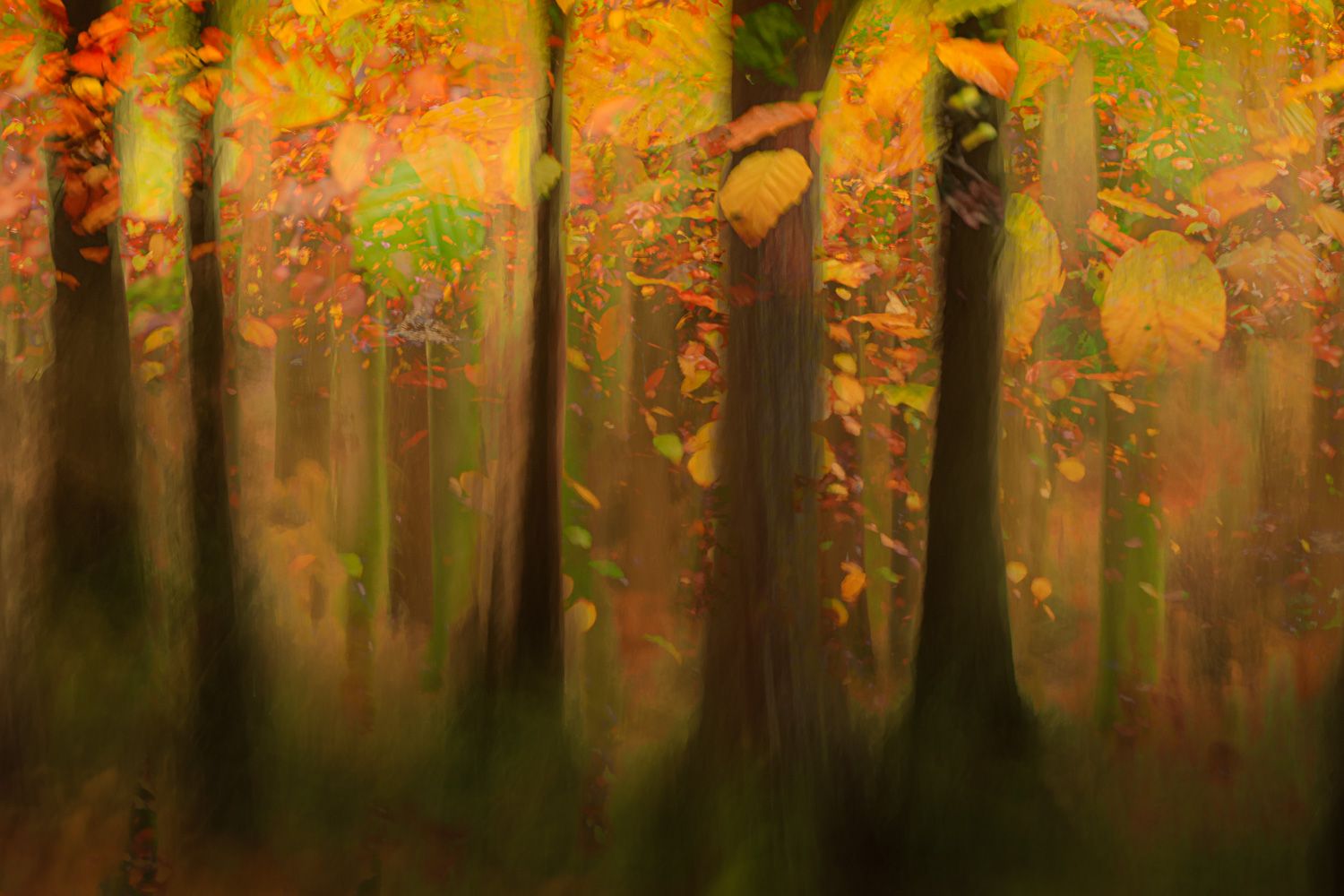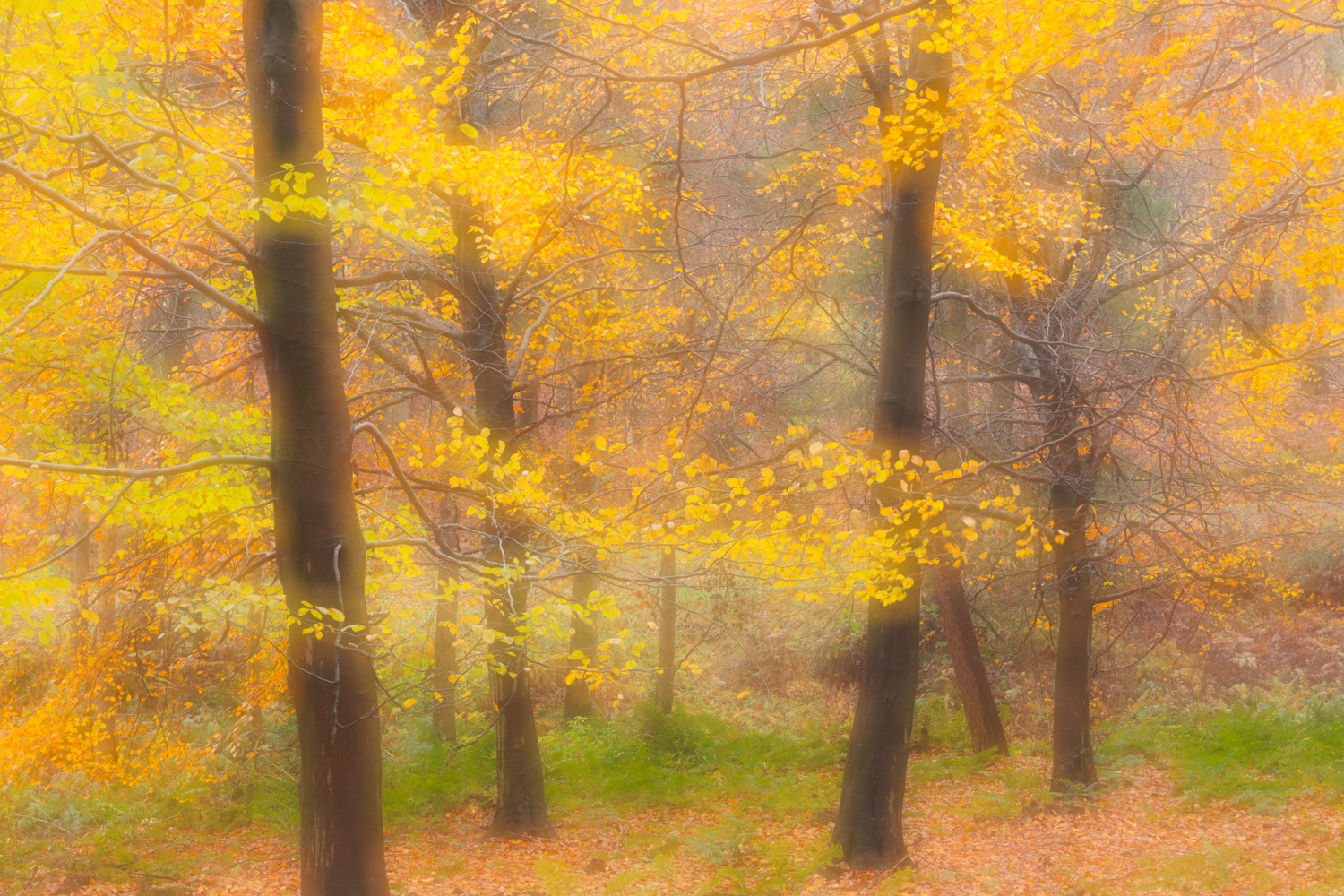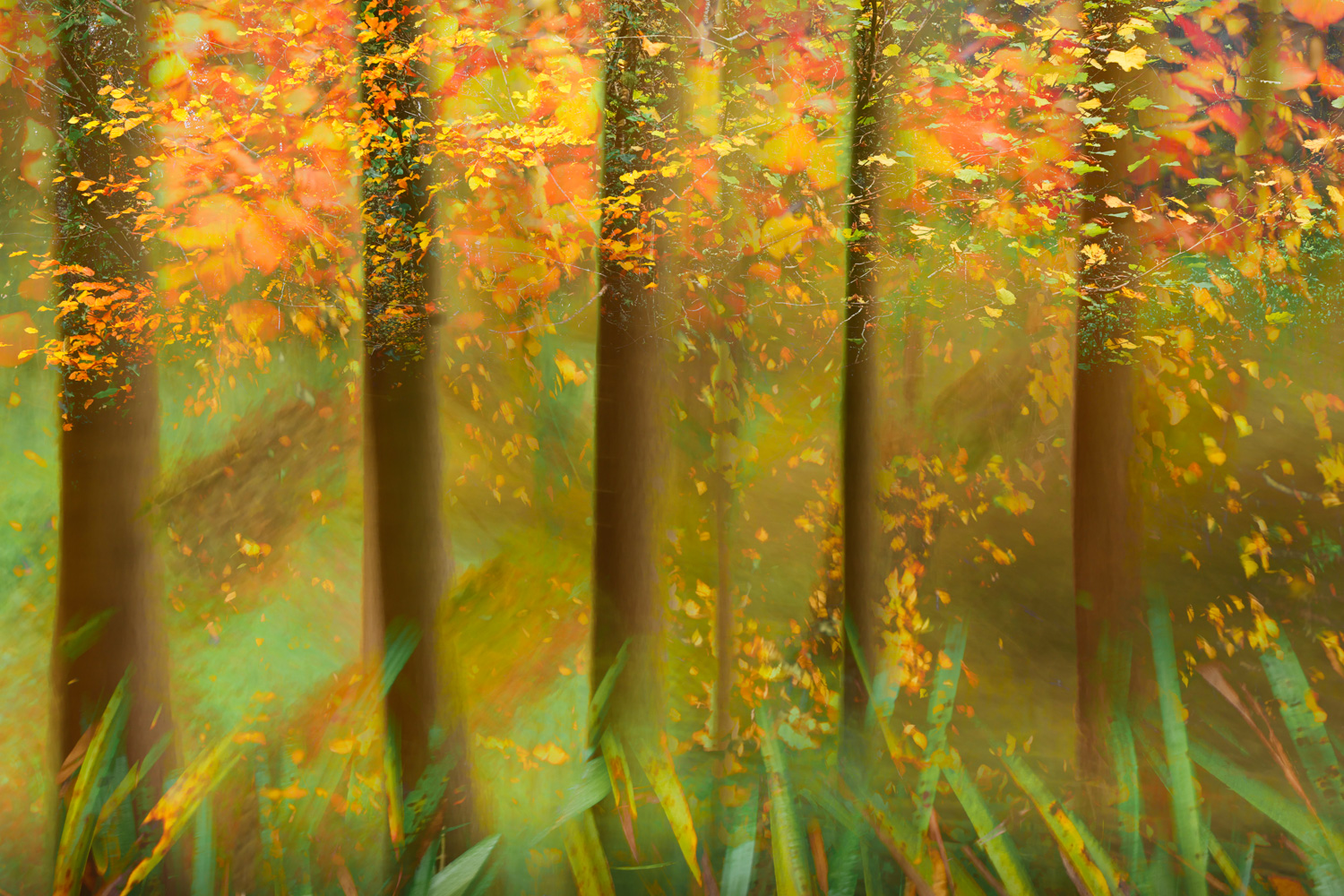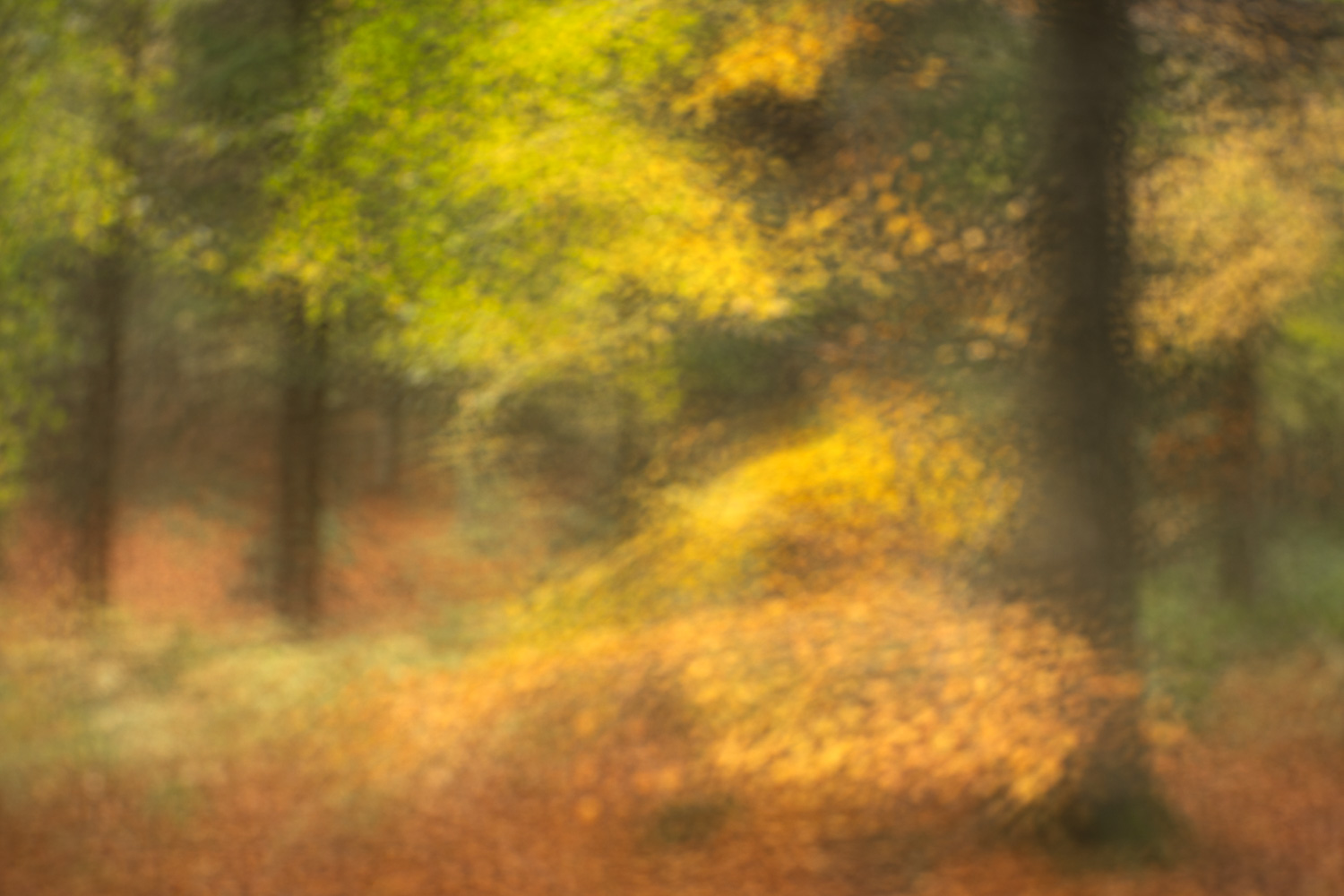
Beyond the Obvious: Creative Woodland Photography
November might seem like a quieter month for landscape photography - autumn’s fiery peak is passing, the days are short, and the weather often feels dull. But for the creative photographer, this season offers a wonderful opportunity to experiment. When colour fades and light softens, it’s the perfect time to move beyond documentation and into expression.
In this article, I’ll explore three ways to bring emotion and atmosphere into your woodland photography this autumn: The Orton Effect, multiple exposures and using Lensbaby lenses. Each of these tools helps move your images from literal to lyrical!
1. The Orton Effect: Dreamy Woodland Light

Many modern digital cameras allow you to create in-camera multiple exposures, blending two or more frames into one. This technique can create soft, painterly results known as the 'Orton Effect' that suits the subtle tones and textures of late autumn woodland.
Here’s a simple method I often use:
- Take your first shot sharply focused on your subject—perhaps a group of trees or colourful ground cover.
- For your second exposure, deliberately defocus slightly to create a ghosted, dreamy version of the same scene.
- The blend of sharp and soft introduces a lovely sense of glow and depth.
To create the effect in software like Photoshop:
- Duplicate your image layer.
- Apply a Gaussian blur to the top layer—enough to lose detail but preserve form.
- Set the layer blend mode to ‘Screen’ or ‘Soft Light’ and reduce opacity to taste.
This creates a soft glow that gently lifts the highlights and adds a fairytale-like atmosphere - perfect for woodland paths, backlit trees or soft layers of leaf colour. Just don’t overdo it. Subtlety is key.
2. Multiple Exposures

Many modern cameras include a built-in multiple exposure mode that allows you to blend two or more images into a single frame without using post-processing. Depending on the camera there can be up to four different blending modes; Additive, Average, Lighten, Darken (these description vary slightly between cameras but they do the same thing).
- Additive: After the first exposure, each successive exposure combines and lightens the overall image. It's usually best to under-expose each image using this mode as it's easy to overexpose the resulting image if you don't.
- Average: This is possibly the most popular mode as it not only combines each image but also averages out each exposure. This is perfect for producing the Orton Effect as mentioned above.
- Lighten: After the first image, each successive image will only overlay (or prioritise) the brighter areas of the scene. This takes a bit of understanding but once mastered gives great results!
- Darken: This does the opposite of Lighten and only overlays the darker areas of every successive image taken.
There's no doubt that in-camera multiple exposures can initially appear frustrating to master but if you're willing to spend time learning and experimenting with them, you will find they have infinite opportunities in an autumn woodland setting!
3. Lensbaby: Imperfection with Purpose

Autumn is also the ideal time to reach for a creative lens. I love using Lensbaby lenses—particularly the Soft Focus or Velvet series—when I want to evoke a mood that’s less about precision and more about feeling.
Their selective focus and swirly bokeh can be used to great effect in woodland scenes, especially when light is low and the background is soft. Use them to isolate a single curled leaf, a lone tree, or a patch of glowing bracken. The soft edges and gentle blur mimic the sensation of being immersed in nature rather than just observing it.
They’re also brilliant for capturing the movement of wind in the trees or grasses—introducing an impressionistic quality without needing long exposures.
Embracing the Mood
In November, the woods start to become quieter. Colours become more muted, but the structure of the landscape reveals itself. Without the distraction of full foliage, branches and trunks become graphic and bold—ideal subjects for abstract or expressive compositions.
Don’t chase perfection. Instead, respond to the mood—whether it’s melancholy, stillness or a soft farewell to the season. Let go of sharpness, straight lines, and textbook compositions. Photography in autumn woodland doesn’t always have to be literal. It can be poetic.
Shift your mindset
Whether you're layering exposures in-camera, adding gentle glow in post, or using a quirky creative lens, November is the ideal time to shift your mindset from capturing reality to evoking emotion. Go with intention—but leave room for surprise.
Learn More
Why not join me on one of my many autumn workshops I run each year. I cover all the above in great detail and promise you will return with not only great memories but beautiful photos, too. Full details can be found on the Workshops page of my website here >>.